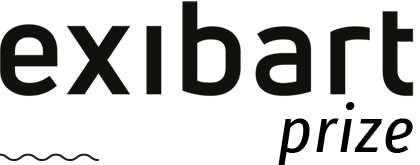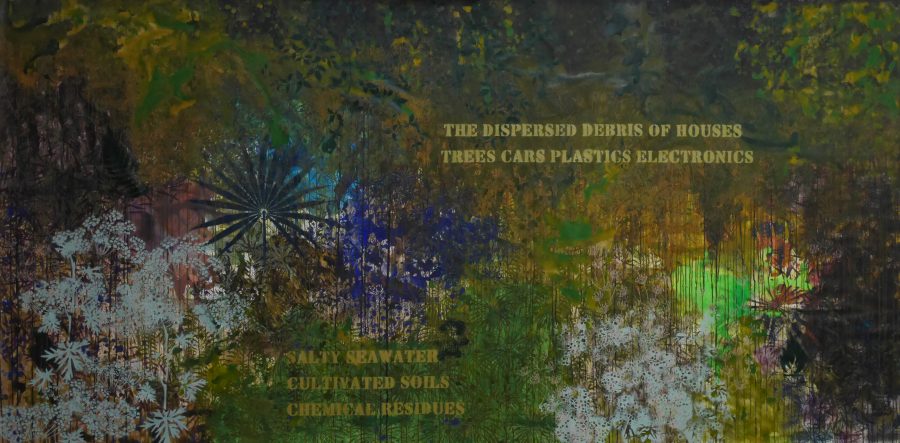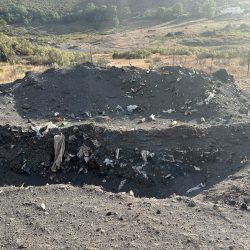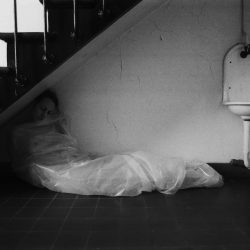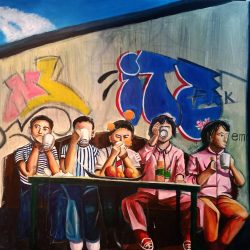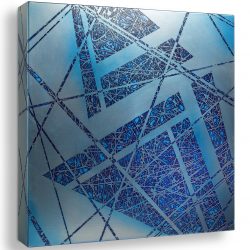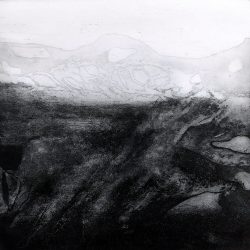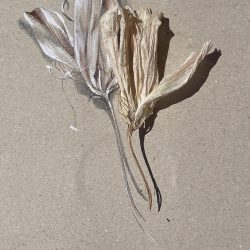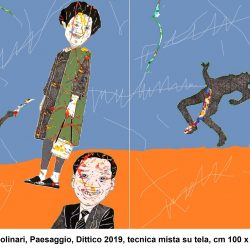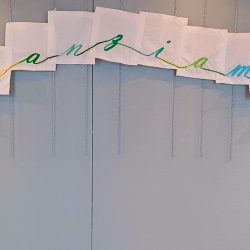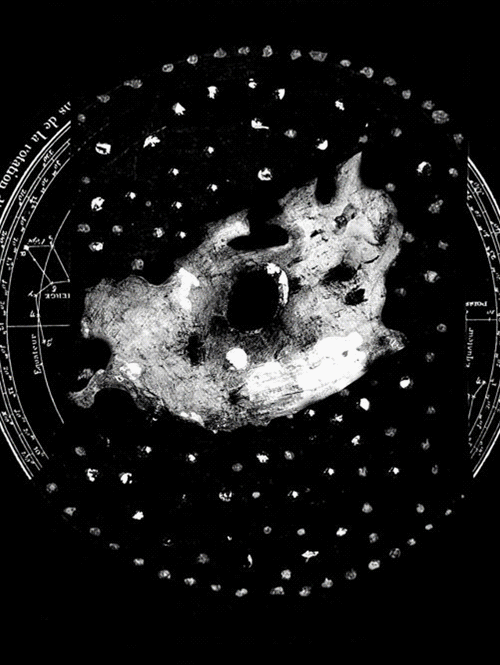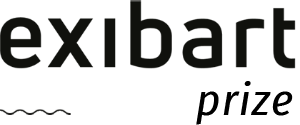work
The Dispersed Debris Of Houses
| category | Painting |
| subject | Political / Social, Landscape, Nature |
| tags | plants, Gaia, pattern, pattern roller, Earth, freestyle landscape |
| base | 330 cm |
| height | 160 cm |
| depth | 0 cm |
| year | 2021 |
Humans, as naive modern observers, believe themself to be in no way connected to nature, over which, however, they can freely dispose. The contemporary situation show the true extent of this error. Only slowly are we grasping the true scope of our connection. Are all the pretty shores already covered by plastic waste, the oil slicks of the last shipping accident or part of a vacation resort? Nature, despite its evolutionary change dominated by unchanging laws, as a reliable and sometimes untouched counterpart of humans no longer exists. Did it ever exist? The ecological crisis is not only a crisis of nature, it is to the same extent a crisis of culture. Man and nature are connected, only six degrees of separation, or better: Six degrees of connection. This applies to the relationship with a market in Wuhan as well as with the trees of the Amazon, some fishes in the Danube or the melting ice in Greenland. Ashkan Sepavand describes this disastrous, impenetrable mess as
"A steaming mixture of sea and earth, of salty seawater, cultivated soils, chemical residues, fats, oils, livestock cadavers, the dispersed debris of houses, trees, cars, plastics, electronics, metal alloys, textiles, crops, stuff, the traces of synthetic compounds, pharmaceuticals, antibiotics, heavy metal pollutants, pesticides, fertilizers, explosives, and artificial radionuclides abound." (Ashkan Sepavand: MUD: All worlds, all times!)
The flap of a butterfly's wings in Brazil can trigger a tornado in Texas; a coffee cup carelessly discarded in Texas can fatally strike that butterfly. We live in the midst of an intricate network of countless living things, entangled in the global effects of the Capitalocene.
The painting "The Dispersed Debris Of Houses" is done with gouache, spray paint and acrylics on unstreched canvas. Distorted, fragmentary but nonetheless beautiful landscapes are combined with found quotes and scraps of words that shook me and should do the same to the viewer. It is part of the series "How to Speak about the Earth", which was started in fall 2020. At its heart is the engagement with the the so called "climate crisis" and Bruno Latour's analysis of the current situation in his book "Facing Gaia".
"A steaming mixture of sea and earth, of salty seawater, cultivated soils, chemical residues, fats, oils, livestock cadavers, the dispersed debris of houses, trees, cars, plastics, electronics, metal alloys, textiles, crops, stuff, the traces of synthetic compounds, pharmaceuticals, antibiotics, heavy metal pollutants, pesticides, fertilizers, explosives, and artificial radionuclides abound." (Ashkan Sepavand: MUD: All worlds, all times!)
The flap of a butterfly's wings in Brazil can trigger a tornado in Texas; a coffee cup carelessly discarded in Texas can fatally strike that butterfly. We live in the midst of an intricate network of countless living things, entangled in the global effects of the Capitalocene.
The painting "The Dispersed Debris Of Houses" is done with gouache, spray paint and acrylics on unstreched canvas. Distorted, fragmentary but nonetheless beautiful landscapes are combined with found quotes and scraps of words that shook me and should do the same to the viewer. It is part of the series "How to Speak about the Earth", which was started in fall 2020. At its heart is the engagement with the the so called "climate crisis" and Bruno Latour's analysis of the current situation in his book "Facing Gaia".


